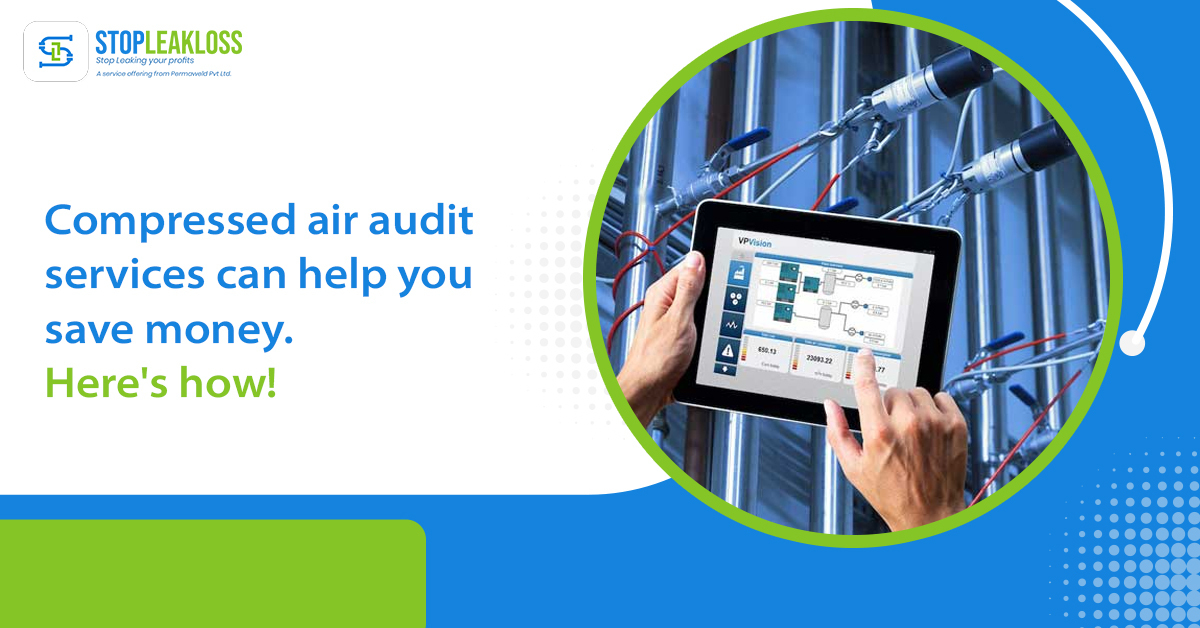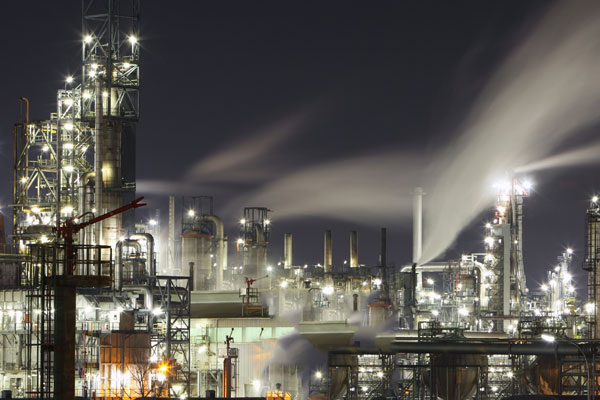
Compressed air audit services can help you save money. Here’s how!
Energy audit of compressed air system- If air compressors are not properly maintained, they can drain a lot of money from your manufacturing budget. In today’s competitive environment, saving money on your air compressor systems is tough. But getting an energy audit of a compressed air system can help you save money.
Leaking and damaged components restrict the amount of appropriate pressure your compressor can generate. Blowouts can occur when damaged valves and damaged connections break suddenly. Unplanned downtime of an air compressor system costs a lot of money in terms of missed output or getting new emergency equipment, and physical damage and personal injury claims will add to the costs of a defective air compressor. This can be avoided if energy audits of compressed air systems are conducted in time. (energy audit of compressed air system)
Why is energy audit of compressed air systems essential?
Energy audit of compressed air systems done in terms of preventive maintenance is less expensive than spending money to fix parts that were simply worn out due to small faults just because they were overlooked: You can increase the life of your air compressor simply by making sure it is in good working condition. If an energy audit of a compressed air system is regularly done, it will last for quite along. Proper use is also important in getting the most out of your compressed air system. As a result, adequate employee training to avoid overseeing should be part of your operational plan.
An energy audit of the compressed air system is the best approach to optimize your facility’s whole compressed air system. A team of skilled specialists from stopleakloss will inspect your system and conduct a number of tests and provide recommendations, leaving you with a list of modifications and fixes you can implement to enhance the efficiency of your compressed air system. (energy audit of compressed air system)
According to the Department of Energy, compressed air accounts for up to 10% of all power generated in general. According to the same research, up to 50% of compressed air energy output is wasted. One small leak in your compressed air system might waste 20-30% of your compressor’s overall output. An audit can give a road map on how to run more efficiently. (energy audit of compressed air system)
The Importance of energy audit of compressed air system
An energy audit of a compressed air system can show you how much of your production is being wasted. It is intended to assist you in identifying inefficiencies so that they may be corrected and your business can save money on long-term operating expenditures.
Following audit suggestions might pay for itself over time. Some of the most popular audit recommendations include:
- Firstly, acknowledge leaks that were previously discovered and fix them
- Stop the system from being too pressured. Examine the air needs.
- Stop the use of outmoded constraints by replacing faulty pipework.
- Check if system storage is sufficient
- Monitor overall use of compressed air system
- Pumps for monitoring the system
- Enhance system upkeep
If you are able to comply with these and another energy audit of compressed air system suggestions, your company may be qualified for numerous possible energy rebates, which can save you even more money on electricity expenditures. (energy audit of compressed air system)
The Steps Involved in an energy audit of compressed air system
It’s critical to understand what an energy audit of a compressed air system entails. If you commit to conducting an audit at your plant in order to reclaim some of your compressed air efficiency, the following are some of the primary stages that the auditing team should take:
- A Site Survey – The goal of this stage is to collect a thorough inventory of all equipment that is part of a specific facility’s compressed air system. This is a fundamental stage that must be accomplished in order to have a clear grasp of what needs to be monitored. They may, for example, identify the type of compressor (make and model), storage, air dryer, any piping present within the facility, and anything else relevant to the system.
- Measuring Output — The audit team will install measuring equipment throughout the compressed air system to compare KW output to cubic feet per minute. This provides a more comprehensive picture of the system’s output. The measuring period will encompass peak and non-peak intervals to gain a sense of the overall flow.
- System Dynamics Evaluation – This entails analyzing the data gathered up to this point in order to identify areas for improvement. It entails examining all compressed air users at a facility to determine if compressed air is required for certain uses. (energy audit of compressed air system)
- Implementing Suggestions for Better Output – The truth is that there is no straight link between compressed air usage and electricity consumption. Leaks and other inefficiencies enter the picture. The audit team’s recommendations are intended to align electricity consumption and efficient compressed air utilization. This may entail decreasing wasteful compressed air consumption, repairing leaks, or updating inefficient equipment. It may also incorporate any of the frequent discoveries described above in order to increase system efficiency.
- Performance Verification — A post-operational review helps your firm to determine how the compressed air system audit will pay for itself. The degree of energy consumption may be determined by determining enhanced efficiency and decreased output.
You save money on electricity bills and may be eligible for energy rebates if you comply with the adjustments and show measurable reductions in energy consumption.
Find Out How You Can Save
The primary purpose of any compressed air system audit is to identify a method for increasing energy production vs system efficiency. This is most simply determined using the KW/100 cfm formula.
Adding a variable frequency drive, for example, can provide you with greater direct control over your compressed air use. It may enable you to create at the lowest allowed pressure, so saving your firm money on unnecessary air. Implementing the audit team’s recommendations can help reduce waste in your compressed air system and qualify you for the above-mentioned refunds.
While the audit itself may need an expenditure on your part, implementing the advised changes might position your firm for an energy-efficient future, saving you money in the near future. Even if you purchased the most recent, cutting-edge technology, it may still be enhanced. There is a potential that the efficiency can be enhanced.
If you need a compressed air system audit at your site or have any queries, please contact us right away!



